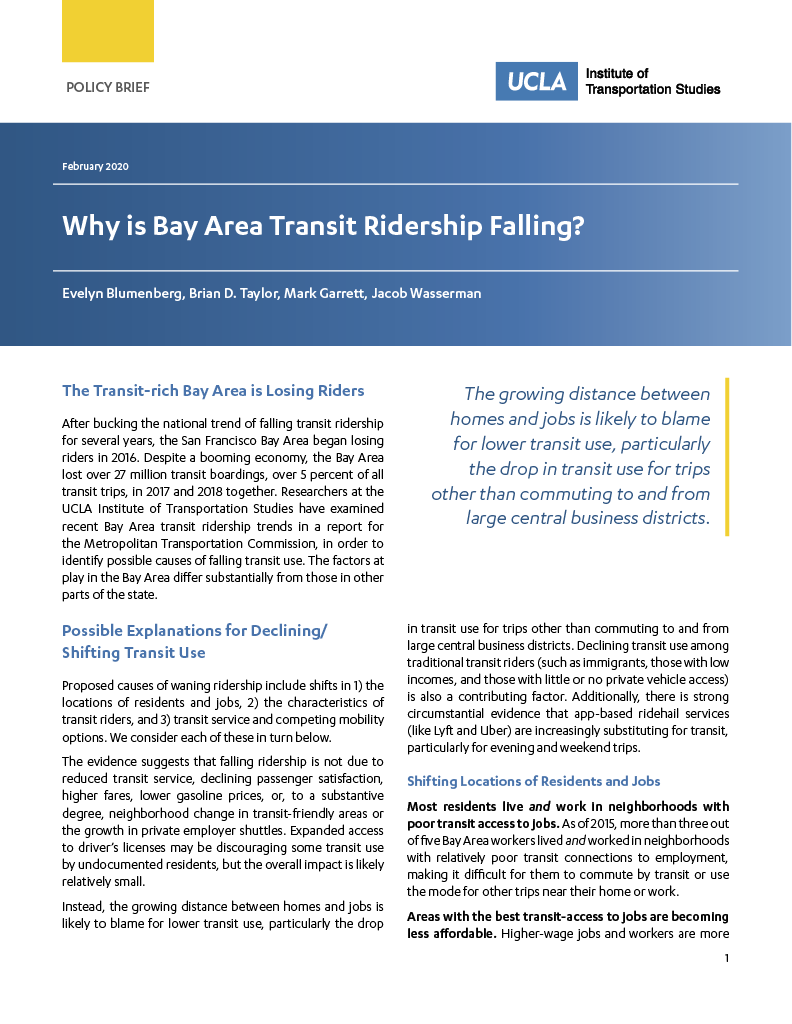Date: February 26, 2020
Author(s): Evelyn Blumenberg, Brian D. Taylor, Mark Garrett, Jacob L. Wasserman
Abstract
Transit ridership in the Bay Area began falling in 2016 despite a booming economy. The evidence suggests that falling ridership is not due to reduced transit service, declining passenger satisfaction, higher fares, lower gasoline prices, or, to a substantive degree, neighborhood change in transit-friendly areas or the growth in private employer shuttles. Instead, the growing distance between homes and jobs is likely to blame for lower transit use, particularly the drop in transit use for trips other than commuting to and from large central business districts.
About the Project
Public transit ridership has been falling nationally and in California since 2014. The San Francisco Bay Area, with the state’s highest rates of transit use, had until recently resisted those […]


